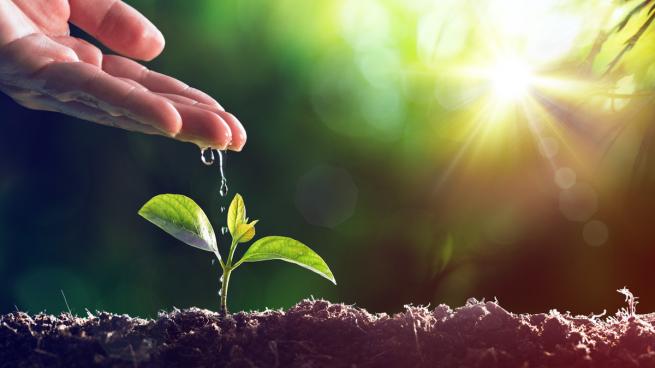Environment means the biotic and abiotic components surrounding us. Components in the environment interact with each other and adapt themselves to survive in it. Even the environment rejuvenates itself from time to time. The air we breathe, the water we drink, the food we consume, and all have been bestowed on us by the environment. Yet the humans, driven by the intensified technology, fail to acknowledge the invaluable importance of the natural environment. Focused more on the path to conquering the world, humans have crossed the line in nature. Instead of being faithful, humans have harmed the environment in various ways. Deforestation, encroachment on wildlife habitats, acceleration of climate change, plastic pollution are only a few examples among them. These anthropogenic activities that cause damage to the environment on a global scale degrade the ecosystems making them unfit for life.
World Environment Day 2021
Designated by the United Nations, each year on the 5th of June, the World Environment Day (WED) is celebrated with participation from over 143 countries. This year Pakistan hosts the WED with the UN Environment Programme (UNEP). The day encourages and vouchsafes the necessity of safeguarding the environment. It acts as a platform that addresses the unfavorable impact of environmental issues; climate change, resource depletion, global warming, marine pollution, human overpopulation, etc.
Welcoming the UN decade on Ecosystem Restoration
The theme for WED this year is “Ecosystem Restoration”. With that, the celebration is going to embark on the UN decade on Ecosystem Restoration (2021-2030); preventing, halting, and reversing the degradation of ecosystems on every continent and in every ocean. The year 2020 was a year we faced multiple crises including the Covid-19 pandemic and not to mention the reckless continuation of pollution and climate change. The phrase “Ecosystem Restoration” has never been made sense as it is high time that we take steps to move from destruction to healing. Restoration of ecosystems is imperative in order to survive and thrive.
“This is our moment. We cannot turn back time. But we can grow trees, green our cities, re-wild our gardens, change our diets and clean up rivers and coasts. We are the generation that can make peace with nature. Let’s get active, not anxious. Let’s be bold, not timid.”
What is an ecosystem? How do you restore one?
An ecosystem is a system where living components interact in conjugation with nonliving components, linked together through nutrient cycles and energy flows. Ecosystems are incredibly diverse varying in size, biotic/abiotic features. Ecosystems are marine, freshwater, and terrestrial. The terrestrial ecosystems are further divided into broad groups called biomes.
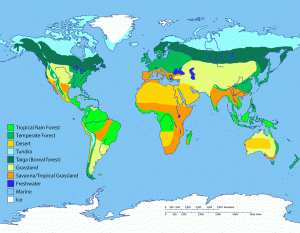
Ecosystems provide us with everything we need; air, water, food, materials, and habitats. Natural ecosystems include forests, rivers, wetlands, grasslands, estuaries, and coral reefs while cities and farmlands play as human-made ecosystems. Currently, these precious ecosystems are under threat facing issues; forests are being cleared, rivers and ocean are being polluted, degraded, and overfished, wetlands are being drained, farmlands and grasslands are being overexploited. Unless we pause and take immediate action to restore the environment we will have to live and bequeath a corrupted, deteriorated planet to our future generations.
Let’s focus on how to restore ecosystems.
Implementing steps to reinstate flawed ecosystems that have been degraded or destroyed and conserving the ecosystems that are intact is called ecosystem restoration. Restoration can happen in two ways; actively planting the missing components and removing the causes that cause the degradation. Ecosystems including forests, farmlands, grasslands, oceans, rivers can be restored and brought back to their natural selves.
Forests
Forests are facing intense pressure due to hunger for land and timber with the overpopulation. Forests are cleared on large scale for logging, firewood cutting, pollution due to chemicals, plastic sewage, farming, and infrastructure. Restoring forests involves replanting and reducing the above actions. Therefore in doing so forests can rejuvenate and re-grow naturally.
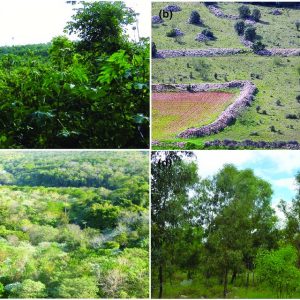
Lakes and rivers
Freshwater ecosystems have been blemished by pollution, overfishing, and infrastructure/ over-extraction of water for irrigation. Canalization and mining for sand and gravel also degrade them. Restoring these ecosystems is not that easy and can be done by putting an end to pollution, reducing and treating waste, managing demand for water and fish, and reviving vegetation. When restoring vegetation, plant indigenous species and remove the invasive alien species. Also, it is advisable to restore the river banks and take the necessary steps to avoid pollution.
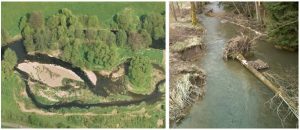
Grasslands and savannahs
These ecosystems are constantly overgrazed and eroded and converted into farmlands or invaded by alien species. When restoring these ecosystems you have to focus mainly on reintroducing eradicated plants, animals and see to their establishment by protecting them from predation and hunting.
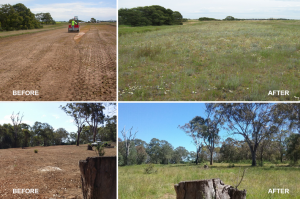
Oceans
Marine ecosystems are harmed due to chemicals, particles, industrial, agricultural and residential waste, invasive organisms, climate change, and overexploitation. It is crucial to terminate the pollution and re-establish mangrove and coral reef ecosystems. Not only those, reinstalling saltmarshes, sea-grass meadows, and shell-fish beds to boost the ecosystem and treating sewage properly and other waste especially plastic can be implemented to restore marine life.
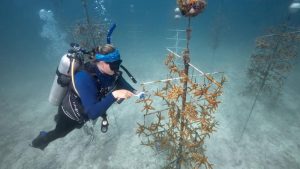
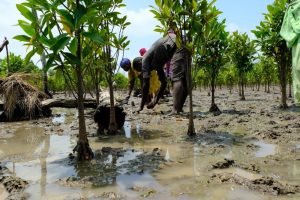
Restoration paves the way to achieve all of the Sustainable Development Goals (SDGs – a group of 17 interlinked global goals devised to be “a blueprint to achieve a better and more sustainable future for all by 2030”.)
Ecosystem restoration happens on a grand scale. But that does not mean we cannot do anything about it. There are many small actions that an individual can take; planting trees, disposing of garbage accordingly, cleaning up trash alongside riverbanks or coastlines, using plastic-free alternatives, and so forth. One small change can bring about a greater change; conferring a positive impact on the environment we live in.
Image courtesies:
- Featured image: https://bit.ly/2RiBHSJ
- Image 01: https://bit.ly/2Ritjmd
- Image 02: https://bit.ly/3fO5qMS
- Image 03: https://bit.ly/34FIfhc
- Image 04: https://bit.ly/3yXLdvj
- Image 05: https://bit.ly/3wPzKMH
- Image 06: https://bit.ly/3yVp6ps
References:
- https://www.unep.org/events/un-day/world-environment-day-2021
- https://www.unep.org/news-and-stories/story/beginners-guide-ecosystem-restoration
- https://unenvironment.widen.net/s/ffjvzcfldw/ecosystem-restoration-playbook

